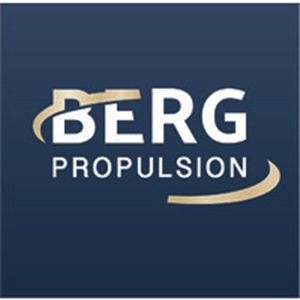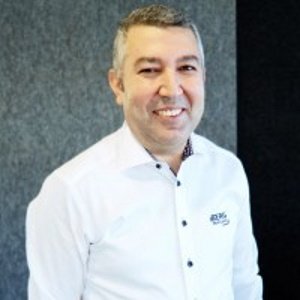Berg Propulsion - Experts & Thought Leaders
Latest Berg Propulsion news & announcements
BERG Propulsion is offering the shipping industry its first opportunity to select propeller shafts made using the climate neutral GreenForge® production process, in a maritime sector that is highly exposed to anticipated carbon pricing. Three Louis Dreyfus Armateurs (LDA) ro-ro vessels due in service from 2026 to carry aircraft parts across the Atlantic are already set to take advantage of sustainable wind power, courtesy of their rotor sails, while their hybrid propulsion, power management and control technology is coming from BERG. BERG propeller shafts In addition, BERG will supply propeller shafts made from recycled scrap steel, using the GreenForge® production – a process developed by Björneborg Steel which draws on renewable electricity sources and makes pioneering use at scale of the fossil-free biogas rDME or bio-propane instead of propane. The process is audited as cutting 95% of the CO2 generated in conventional production, with other measures mitigating the remaining emissions to ensure full climate neutrality. GreenForge® process Björneborg Steel indicates that having the six propeller shafts for LDA using the GreenForge® process Björneborg Steel indicates that producing the six propeller shafts for LDA using the GreenForge® process will result in a reduction of 160 tonnes of CO2 compared to the conventional method. Kajsa de Mello, Operations Director, BERG Propulsion, said: “BERG is delighted to work with Sweden’s cutting-edge steel industry and pioneer the use of maritime GreenForge®. We are proud to be the first supplier in the world to offer customers propeller shafts using this process. It is fitting that the first sea-going application should be low-emission ships." Investing in clean technologies The world’s first climate-neutral propeller shaft for LDA is due delivery from Björneborg Steel to the BERG plant in Hönö, Sweden, in March, with five more to arrive before the end of June 2025. The EU's 'Clean Industrial Deal' is expected to help revitalise European industries by including measures to incentivise renewable energy, remove barriers to investing in clean technologies, and offering aid and tax breaks to cut carbon. Penalties are also coming for CO2 emissions in an industry that will improve the competitive position of processes such as GreenForge®. Climate-neutral processes Björneborg Steel projects emission-free processes will be cheaper than their legacy counterparts CO2 emission ‘rights’ are being withdrawn from EU steelmakers, meaning they can switch to climate-neutral processes or face penalties and higher production costs. By 2030, Björneborg Steel projects emission free processes will be cheaper than their legacy counterparts. “The sustainability case for carbon neutral steel is compelling and, while it is currently at the premium end of the market, its use will offer marine equipment buyers a route around escalating fossil-based production costs,” said de Mello. “BERG is proud to lead where others will have to follow.” BERG’s customers Håkan Dedorsson, CEO of Björneborg Steel, said, “Like other industries, maritime has its share of sustainability pioneers and stakeholders open to the innovations needed for the challenges ahead." “We are ramping up production based on the cutting-edge GreenForge® process, subject to the availability of biogases and we look forward to helping BERG’s customers make the green choice that will benefit generations to come.” Based on demand, Björneborg aims to shift its full production to the GreenForge® process in 2027.
Lighthouse Ship Management AS has steered one of its managed general cargo vessel coasters through a BERG Propulsion retrofit project which the Norwegian shortsea shipping service provider confirms has brought a 33% reduction in fuel costs. The Torangsvåg-based fleet manager evaluated BERG’s options for optimising energy use on board Terneskjaer, an 81m length 2,900 dwt general cargo ship owned by Bio Feeder AS. The project sought to cut fuel costs and emissions, while adding a new competitive edge to a vessel built in 2008. BERG retrofit package BERG integrating a new gearbox and two magnet motors with its MPC800 control technology Following a consultative process, Lighthouse selected a BERG retrofit package enabling the conversion of Terneskjaer to higher efficiency diesel-electric propulsion, with BERG integrating a new gearbox and two permanent magnet motors with its MPC800 control technology. The solution provider also optimised the blades on the ship’s existing BERG propeller to reflect changed operational needs, adding a nozzle to improve thrust - especially at lower speeds. Lower carbon requirements “A 33% reduction in fuel costs is highly significant and points to a secure future for a ship which has proved itself as a reliable performer in Norway’s demanding coastal sector for over 15 years,” said Lasse Øpstad, General Manager, Lighthouse Ship Management. “Managed prudently, ships built and maintained to Terneskjaer’s quality can comfortably surpass lower carbon requirements and compete effectively for years to come.” Benefit from Norway’s NOx Fund In securing lower NO2 emissions, the project was eligible to benefit from Norway’s NOx Fund Lighthouse manages a wide range of ships for seven shipowners. In securing lower nitrogen oxide emissions, the project was eligible to benefit from Norway’s NOx Fund, which allows owners tax breaks if they pay into a scheme to fund NOx reduction measures. “There were several objectives for the Terneskjaer project, including improved performance, greater operational flexibility, lower NOx, decarbonisation and increased lifetime,” said Magnus Thorén, Sales Manager - Energy Efficiency, BERG Propulsion. Norway’s ship managers Thorén added: “However, energy efficiency is critical in every respect." "We consulted closely with Lighthouse Management to evaluate the upgrade options and we are delighted that the trust of one of Norway’s pioneering ship managers has been wholly vindicated.”
BERG Propulsion has unveiled the OpWind® software system to help crews combine the operation of sails and propellers in the most efficient way in all sea conditions. OpWind OpWind automatically ensures that engine efficiency can be optimised concerning propeller rpm and blade pitch angle when wind propulsion is also used to propel a vessel. The approach saves even more fuel than would otherwise be the case. The system automatically senses any sail contribution to propulsion based on a vessel’s operation data and measured parameters, continuously and automatically adjusting propeller pitch and speed to maximise the efficiency of the combined operation of the propeller and sails. Optimal operating actions "The BERG Propulsion OpWind system has been developed from the Swedish company’s existing Dynamic Drive technology to compare detailed theoretical information and calculations about operating with propellers and sails against measured values on-board the vessel," said Chief Technology Officer - Emil Cerdier. He adds, "OpWind is a more advanced system than Dynamic Drive and can be implemented on any ocean-going vessel fitted with any type of sails to identify optimal operating actions." Maximum speed It is also possible to use the propeller for onboard power generation while in sailing mode "Savings from reduced fuel consumption will depend on the vessel configuration and its operating profile, as well as on how large the sails are, but they will be considerable," continues Emil Cerdier, adding "Efficiency gains will be available whether it is a new building or retrofit project." The system can be run in several modes with settings either to keep a desired maximum speed, maximum fuel consumption, or a constant propeller thrust. It is also possible to use the propeller for onboard power generation while in sailing mode. Marine Information Display BERG can also provide a Marine Information Display to visualise performance, as part of the system. A constant vessel speed setting will automatically reduce engine propulsion power, when sails contribute to forward thrust. With a feathering propeller design, it is also possible to shut down one or two main engines depending on vessel configuration, to further reduce fuel and maintenance costs. BERG Propulsion has received an initial order for systems to be used in sail/engine combined operations from a major vessel operator.














